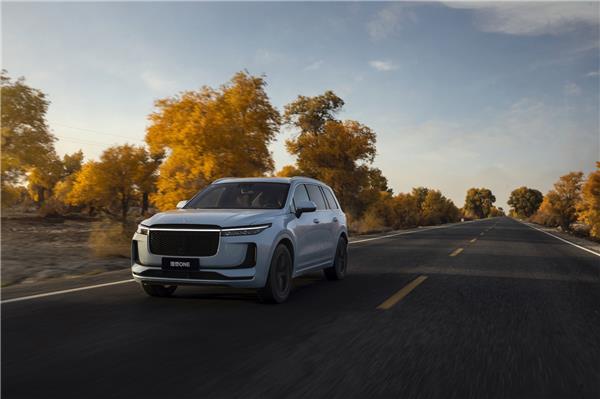Shanghai NEV development policies show future preference to BEV industry
Shanghai (ZXZC)- Shanghai issued in late February the Implementation Plan for Accelerating the Development of New Energy Vehicle Industry (2021-2025) (called the “Shanghai Plan” for short), responding to the State Council’s launch of the Planning on the Development of New Energy Vehicle Industry (2021-2035) in November 2020.
The Shanghai Plan closely follows the central government's guidance on the development of battery electric vehicles (BEVs) and fuel cell vehicles (FCVs). The difference mainly resides in the attitude towards plug-in hybrid vehicles (PHEVs).
According to the State Council's Planning, the PHEV (including range-extended electric vehicles) was treated as a technical route with the same importance as the BEV and the FCV. However, the Shanghai Plan clearly states that the municipal government will stop awarding special “green-colored” license plates to PHEVs starting Jan. 1, 2023, a signal that Shanghai will gradually whittle down the attention to the development of PHEV industry.
As a kind of NEV recognized by Chinese regulators, the PHEV has been well received by consumers, particularly in Shanghai. The megacity's penetration rate of PHEVs stood at 13.4% in 2020, the highest one for the country, according to the China Passenger Car Association (CPCA).
The high penetration rate is partly thanks to the technical merit that the PHEV not only can run without emission in BEV-only mode, but can have its range extended using hybrid mode. Additionally, the governmental incentive is also a major contributing factor. In Shanghai, buyers of BEVs and PHEVs have been exempted from paying exorbitant license plate fees, which can exceed 90,000 yuan ($14,000) per vehicle, and suffering fierce auctions. Hence, buying a PHEV becomes a shortcut to get a Shanghai car plate.
It is foreseeable that the to-be-discontinued exemption will make Shanghai's PHEV sales remarkably grow before the grace period is ended.
Prior to the release of the Shanghai Plan, the to-be-stopped perk had been included the Implementation Methods for Encouraging and Using NEVs (called “the Methods” for short) issued by Shanghai municipal government on Feb. 8. Besides, the Methods also note, beginning March 1, 2020, local residents who already own a traditional vehicle will not be allowed to enjoy the exemption when they buy a PHEV. Meanwhile, the license plate fee exemption will be left unchanged for buyers of BEVs.
The policy has had effect on those consumers who plan to buy the second car. “We intended to buy a PHEV later this year as the family’s second car, while the policy change urged us to make a decision before March 1,” a consumer said on condition of anonymity.
Many other consumers feel the same way. Last month, a number of 4S shops in Shanghai saw an endless stream of consumers who came to buy PHEVs spurred by the policy and substantial discounts.
The to-be-ended exemption might prompt automakers who take Shanghai as a significant market of their PHEVs, such as SAIC Motor PV, BYD and Li Auto, to adjust their technical routes and product structure.

Li ONE; photo credit: Li Auto
Let's take an example from Li Auto. In 2020, a total of 33,455 consumers bought the MLI (the Mandatory Liability Insurance for Traffic Accidents of Motor Vehicles) for Li ONE REEVs, nearly 10% of which were from Shanghai, according to the China Insurance Regulatory Commission. With only one PHEV model for sale, Li Auto is confronted with increasingly large pressure with the termination of free PHEV license approaching. How Shanghai's policy will affect the startup's product planning remains to be seen.

Model 3
The Shanghai Plan sets a concrete target for BEV promotion. By 2025, BEVs should make up over 50% of all new private car sales in Shanghai. The policy indicates that the megacity is placing stronger emphasis on the development of BEVs. The shift of focus not only flows from Shanghai's sense of mission for energy saving and emission reduction, but also is backed by the city's accumulated experience and resources related to NEV industry.
The aggressive target for BEV popularization is based on Shanghai's own industrial development status and market climate, which may not be available for other regions.
Shanghai is chosen as the location of Tesla's first overseas assembly plant. Last year, it was honored the No.1 city in China by the insurance registration volume of the China-made Model 3, which amounted to 32,812 units. In addition, both SAIC Motor's launch of the premium EV brand “IM” (dubbed “Zhiji” in Chinese) and the joint venture SAIC Volkswagen's introduction of ID. series mirror the growing prosperity of BEV industry in Shanghai.
Apart from the resources brought by leading automakers, including the aforesaid Tesla, SAIC Motor and Volkswagen, consumers' growing adoption of BEVs also significantly contributes to the decision-making.
“We noticed that with more BEV models that feature long range and high intelligence level hitting the market, citizens are better encouraged to buy and use BEVs. Last year, BEVs accounted for 63% of Shanghai's annual NEV sales, vigorously rising from the 29% in 2018, and the upward movement will be maintained in the future, according to our judgement. Based on those analyses, we adjusted as appropriate the policy on special NEV license plates, intending to have the limited road resources focus more on the application of BEVs and FCVs,” Qiu Wenjin, deputy head of the Shanghai Municipal Development and Reform Commission, said in late Feb. at a press conference.

